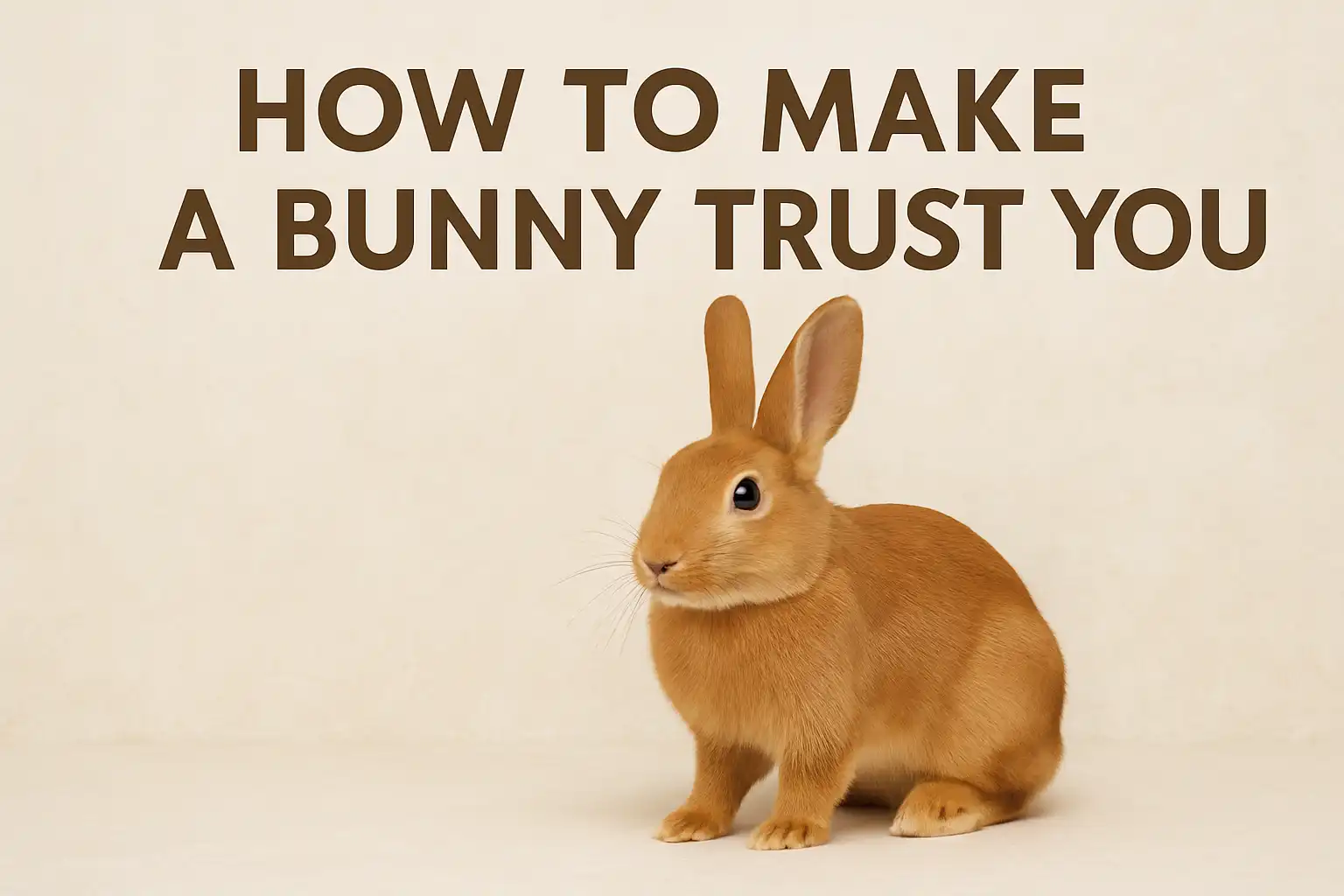Wondering why your bunny runs away when you approach? Building trust with these sensitive pets takes time, patience, and the right approach. This guide shows you exactly how to make a bunny trust you using proven techniques from rabbit behavior experts.
When I first brought home Clover, my Netherlands Dwarf rabbit, she would dart away at the slightest movement. As a rabbit behavior consultant with over 15 years of experience, I knew that learning how to make a bunny trust you requires understanding their prey animal instincts. Rabbits view the world differently than dogs or cats—with heightened senses and a natural wariness that’s kept their species alive for millennia.
Many new rabbit owners become discouraged when their bunnies hide, thump, or even nip when approached. This isn’t a reflection of your bunny’s feelings toward you, but rather their natural survival response. Through my work with hundreds of rabbit owners, I’ve developed effective, gentle methods to transform fearful bunnies into confident companions who seek interaction and affection. The journey of how to make a bunny trust you begins by seeing the world through their eyes.
In this comprehensive guide, I’ll share proven techniques for building trust with your rabbit. From creating the right environment to understanding bunny body language, you’ll learn step-by-step strategies that respect your rabbit’s nature while fostering a strong bond. Whether you have a new bunny or are working to deepen your connection with a long-time pet, these expert approaches will help you earn your rabbit’s trust and affection. With enough trust built, you’ll even learn how to get a bunny to come to you voluntarily.
Understanding Bunny Behavior
To effectively learn how to make a bunny trust you, you must first understand how rabbits perceive the world and communicate. Rabbits are prey animals whose survival in the wild depends on being constantly alert to potential threats. This evolutionary programming shapes how domestic rabbits respond to their environment and to you. Successful strategies for how to make a bunny trust you always begin with understanding their natural instincts.
Key Signs of Trust in Rabbits
Recognizing when your rabbit is showing trust helps you gauge your progress and respond appropriately. Successful methods for how to make a bunny trust you will eventually result in these positive behaviors:
- Flopping: When a rabbit flops onto their side with legs extended, they’re showing complete relaxation—a vulnerable position they’d never assume if feeling threatened.
- Binkying: These joyful jumps, twists, and kicks are expressions of happiness that only occur when a rabbit feels safe and content.
- Purring/Teeth Grinding: Soft grinding of teeth (different from louder teeth chattering) indicates contentment, similar to a cat’s purr.
- Grooming You: When your bunny licks your hands or clothes, they’re grooming you—a social bonding behavior that signifies acceptance into their social group.
- Approaching Voluntarily: A bunny who hops toward you without prompting is showing significant trust.
- Nose Bonking/Nudging: Gentle nudges with their nose can be requests for attention from someone they trust.
To learn more about these and other indicators of trust, check out our comprehensive guide to signs your bunny trusts you.
One of my clients, Emma, was concerned when her rabbit Luna stretched out completely next to her on the sofa. “Is something wrong?” she asked me. I was delighted to explain that Luna was displaying the ultimate sign of trust—making herself completely vulnerable in Emma’s presence.

Common Fears and Stress Triggers in Rabbits
Understanding what frightens rabbits helps you avoid inadvertently undermining trust-building efforts. When learning how to make a bunny trust you, be aware of these common stress triggers:
- Sudden Movements: Quick motions above or around rabbits can trigger their flight response.
- Loud Noises: Rabbits have sensitive hearing and are easily startled by sudden sounds.
- Strong Odors: Powerful smells, including perfumes, cleaning products, and smoke can be stressful.
- Being Picked Up: Most rabbits naturally fear being lifted off the ground, as in nature, this would typically mean being captured by a predator.
- Unfamiliar Animals or People: New pets or visitors can represent potential threats.
- Inconsistent Handling: Changing how you approach and handle your bunny can create anxiety.
I worked with a family whose rabbit, Oreo, would thump and run whenever their teenage son entered the room. We discovered the son was wearing a strongly scented cologne that triggered Oreo’s stress response. Simply changing this one element dramatically improved their relationship, illustrating how understanding bunny sensitivities is crucial in knowing how to make a bunny trust you.
When you recognize and respect these natural fears, you can create interactions that help your bunny feel secure rather than threatened, establishing the foundation for trust.
Creating a Safe Environment
A secure, comfortable environment is fundamental when learning how to make a bunny trust you. Rabbits need to feel safe in their surroundings before they can form a trusting relationship with their human caregivers. Creating the right habitat addresses their basic needs while reducing stress and anxiety. Without this foundation, other techniques for how to make a bunny trust you will be much less effective.
Essential Elements of a Bunny’s Space
The physical setup of your rabbit’s living area significantly impacts their sense of security and willingness to trust. Learning how to make a bunny trust you starts with these essential habitat elements:
- Appropriately Sized Housing: Provide a space at least 4-5 times the size of your rabbit when they’re fully stretched out. Cramped quarters create stress, while spacious environments promote confidence.
- Multiple Hiding Spots: Include several enclosed spaces where your bunny can retreat when feeling threatened. Cardboard boxes, commercial rabbit hideaways, or even tunnels work well.
- Proper Flooring: Slippery surfaces cause anxiety as rabbits can’t gain proper footing to flee if necessary. Use non-slip mats, carpet pieces, or fleece liners.
- Consistent Layout: Avoid frequently rearranging your rabbit’s space. Familiarity with their environment helps them feel secure.
- Temperature Control: Maintain temperatures between 65-75°F (18-24°C). Rabbits are sensitive to heat and cold, which can cause significant stress.
- Proper Lighting: Provide a natural light cycle without harsh, direct light. Excessively bright environments can make rabbits feel exposed and vulnerable.
I consulted with a family whose rabbit, Pepper, seemed perpetually nervous despite gentle handling. When we examined her living area, we discovered it was positioned in a high-traffic hallway with no hideaways. Moving her setup to a quieter location with proper hiding spots transformed her behavior within days, demonstrating how environment directly impacts a rabbit’s capacity for trust.
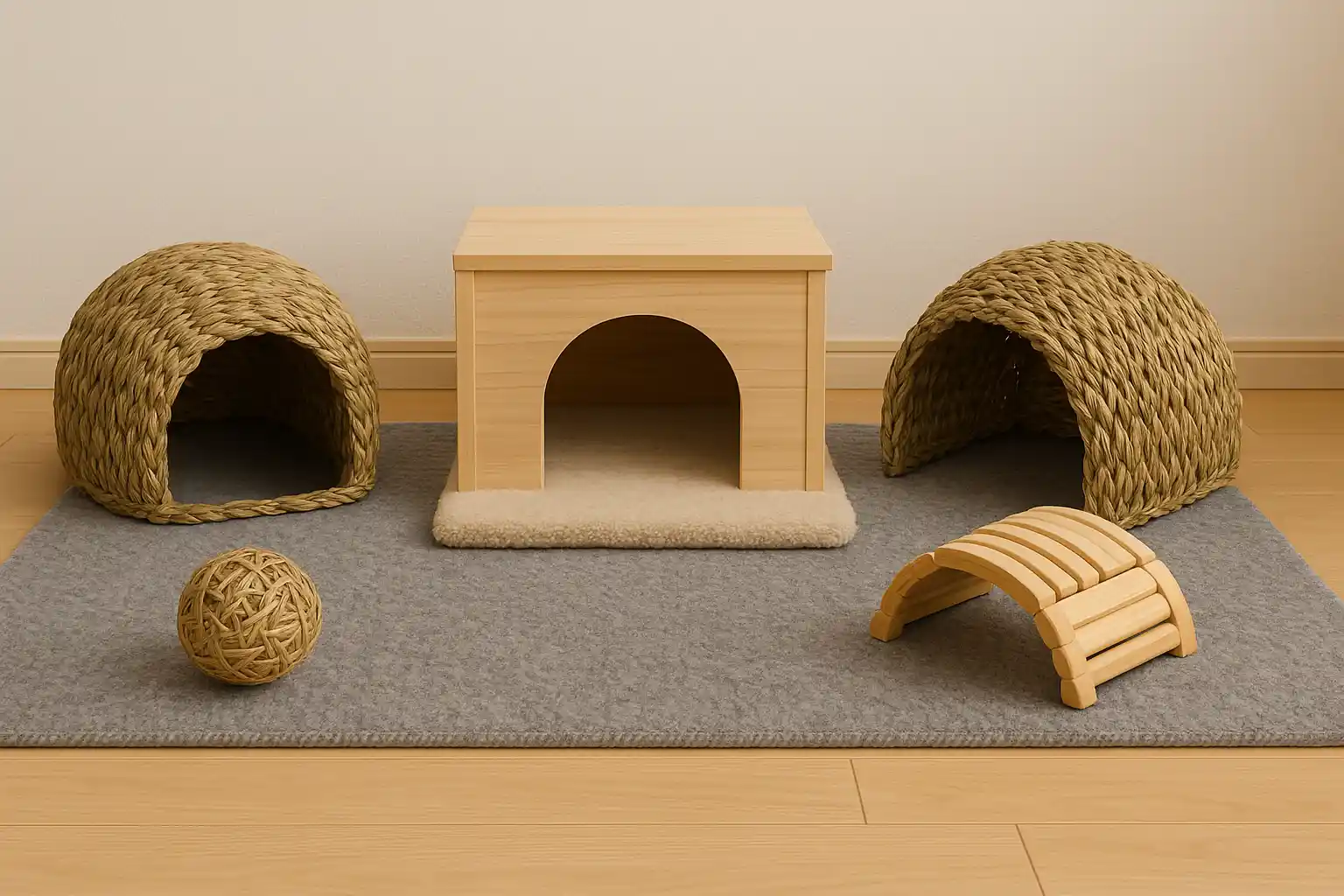
Importance of Quiet and Calm Surroundings
The ambient environment around your rabbit’s space plays a crucial role in their stress levels and ability to build trust. Experts who understand how to make a bunny trust you emphasize these environmental factors:
- Noise Management: Position your rabbit’s habitat away from loud appliances, entertainment systems, or noisy household areas. Consider using white noise machines near their space if your home is naturally louder.
- Limited Traffic: Place their habitat in an area with moderate human presence—enough for socialization but not overwhelming. Avoid hallways or central rooms with constant activity.
- Pet Separation: Keep other pets, especially predatory animals like dogs, at a controlled distance initially. Even if well-behaved, other animals can trigger stress responses.
- Consistent Routine: Maintain regular times for feeding, cleaning, and interaction. Rabbits thrive with predictability.
- Calm Human Energy: Approach your rabbit’s space with slow movements and calm energy. Even human stress or excitement can transfer to sensitive rabbits.
During a home consultation, I observed Theo’s rabbit, Snowball, constantly thumping and hiding. We realized Theo’s apartment faced a busy street with frequent sirens and honking. By moving Snowball to a back room and adding some sound-absorbing panels, we created a considerably calmer environment. Within weeks, Snowball was displaying trust behaviors that Theo had never witnessed before.
When creating your rabbit’s environment, consider the world from their perspective—a prey animal with heightened senses and natural caution. This perspective will guide you in making choices that help your bunny feel secure, setting the stage for developing trust.
Building Trust Through Interaction
How you approach and handle your rabbit directly impacts their willingness to trust you. Thoughtful, respectful interactions that honor your bunny’s natural instincts are essential when learning how to make a bunny trust you. Many owners unintentionally undermine trust by moving too quickly or misinterpreting their rabbit’s behavior.
Gentle Approaches to Handle Your Bunny
The way you physically interact with your rabbit can either build or undermine trust. Learning how to make a bunny trust you requires mastering these gentle handling techniques:
- Start Low: Always approach your rabbit at their eye level rather than looming over them. Sit or lie on the floor nearby without reaching for them.
- Respect Their Space: Allow your rabbit to approach you rather than pursuing them. Place your hand near them and let them investigate in their own time.
- Use Proper Lifting Technique: When necessary to pick up your rabbit, support their hindquarters while cradling their body against yours. Always keep them close to your body for security.
- Pay Attention to Body Language: Watch for ears pressed back, rigid posture, or attempts to flee—all signs your rabbit is uncomfortable. Respect these signals by backing off and trying again later.
- Limit Handling Duration: Keep handling sessions brief at first (just 1-2 minutes), gradually extending as your rabbit shows comfort.
- Create Predictable Patterns: Use the same approach technique consistently so your rabbit knows what to expect.
I worked with Mia, whose rabbit Cinnamon would scramble away whenever she tried to interact. We discovered Mia was unknowingly casting a shadow over Cinnamon when approaching—mimicking a predator’s overhead approach. By simply changing her angle of approach to avoid creating shadows, Mia saw immediate improvement in Cinnamon’s response.
Techniques for Positive Reinforcement
Positive reinforcement creates associations between your presence and pleasant experiences, a powerful tool in knowing how to make a bunny trust you:
- Food Rewards: Offer small treats from an open palm when your rabbit approaches voluntarily. Fresh herbs, small pieces of fruit, or special greens work well.
- Verbal Praise: Use a soft, consistent tone when your rabbit exhibits brave or social behavior. They’ll associate your voice with positive feelings.
- Non-Food Rewards: Gentle scratches behind the ears or on the forehead (areas rabbits typically enjoy) can be powerful reinforcement for rabbits who enjoy touch.
- Target Training: Teach your rabbit to touch a target (like a wooden spoon tip) with their nose, rewarding this interaction. This builds confidence without requiring physical contact.
- Clicker Training: For more structured reinforcement, consider using clicker training—marking desired behaviors with a click sound followed by a reward.
- Never Punish: Avoid negative reinforcement or punishment, which destroys trust. Instead, redirect unwanted behaviors to appropriate alternatives.
Understanding how to make a bunny trust you means embracing these positive methods rather than forcing interaction. With my own rabbit, Clover, I developed a routine of sitting quietly near her enclosure each morning while offering a sprig of fresh basil. Within two weeks, she began approaching as soon as I sat down, eventually climbing onto my lap to receive her treat. This gradual, reward-based approach transformed our relationship by creating positive associations. Avoid negative reinforcement or punishment, which destroys trust. Instead, redirect unwanted behaviors to appropriate alternatives.
Understanding how to make a bunny trust you means embracing these positive methods rather than forcing interaction. With my own rabbit, Clover, I developed a routine of sitting quietly near her enclosure each morning while offering a sprig of fresh basil. Within two weeks, she began approaching as soon as I sat down, eventually climbing onto my lap to receive her treat. This gradual, reward-based approach transformed our relationship by creating positive associations. Avoid negative reinforcement or punishment, which destroys trust. Instead, redirect unwanted behaviors to appropriate alternatives.
With my own rabbit, Clover, I developed a routine of sitting quietly near her enclosure each morning while offering a sprig of fresh basil. Within two weeks, she began approaching as soon as I sat down, eventually climbing onto my lap to receive her treat. This gradual, reward-based approach transformed our relationship by creating positive associations.
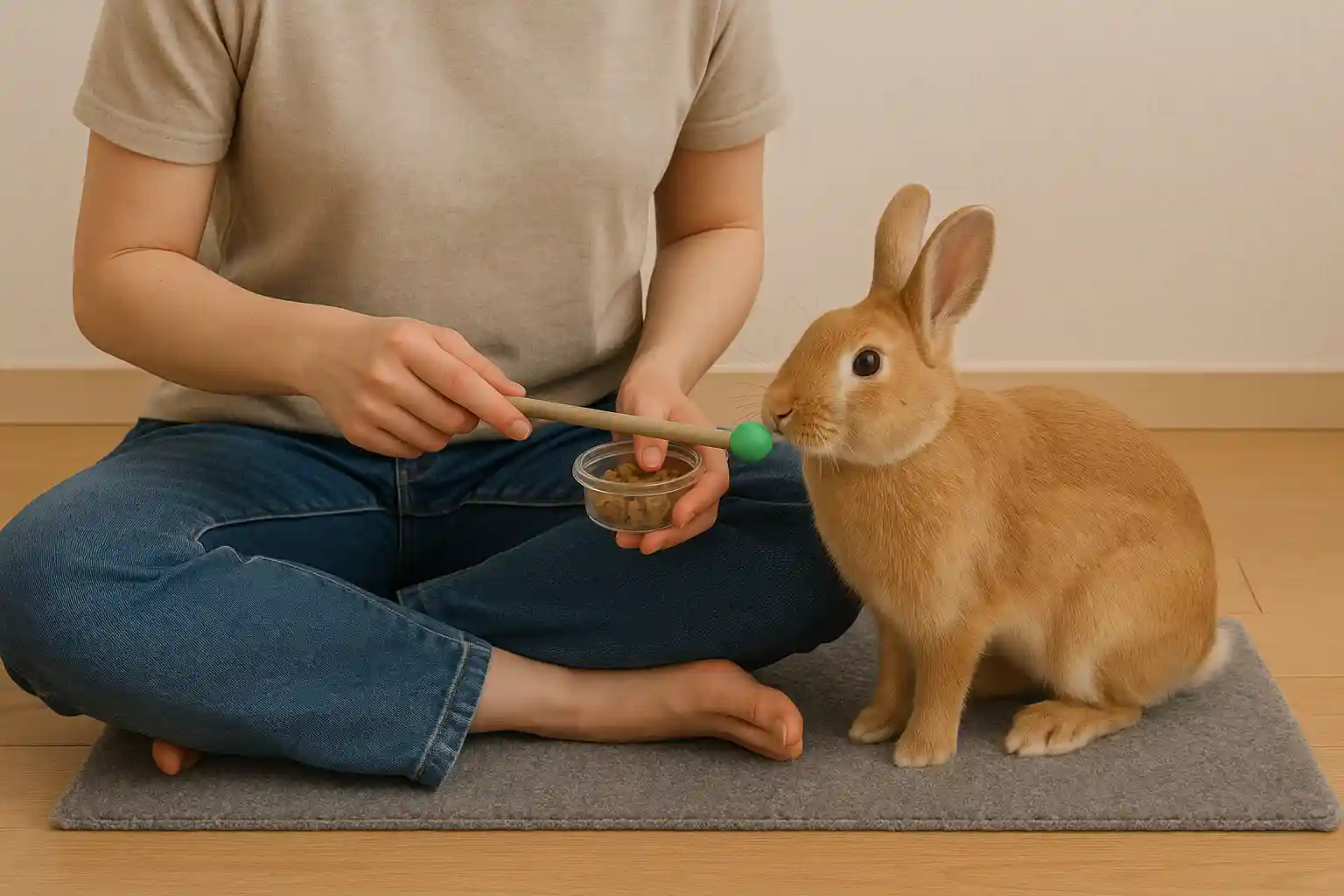
Building trust through interaction requires reading your individual rabbit’s comfort level and preferences. Some rabbits progress quickly, while others need weeks or months to develop confidence. By consistently using these gentle approaches and positive reinforcement techniques, you create a foundation for trust that will strengthen over time.
Bonding Activities with Your Bunny
Once your rabbit begins showing basic trust behaviors, engaging in shared activities can deepen your bond. These interactions help your bunny associate you with positive experiences and demonstrate how to make a bunny trust you through enjoyable engagement.
For more in-depth guidance on creating a lasting emotional connection, you may want to explore our detailed article on how to bond with your bunny, which complements the trust-building techniques covered here.
Fun Games to Encourage Interaction
Playful activities suited to rabbits’ natural behaviors create positive associations with your presence and are essential to how to make a bunny trust you through enjoyable engagement:
- Foraging Games: Hide treats around a safe play area and encourage your bunny to find them while you sit nearby. This taps into natural foraging behavior.
- Tunnel Exploration: Set up cardboard tunnels or commercially available play tunnels. Many rabbits love running through tunnels while their humans tap lightly on the outside.
- Obstacle Courses: Create simple “bunny parkour” with cardboard boxes, tunnels, and platforms at various heights (keeping jumps low for safety).
- Toy Tosses: Some rabbits enjoy chasing and “attacking” small rabbit-safe toys that are gently tossed near them. Wicker balls or paper-based toys often work well.
- Treat Puzzles: Use puzzle feeders designed for rabbits or create DIY versions where they need to move items or solve simple challenges to access treats.
- Chase Games: Some confident bunnies enjoy a gentle game of chase, where they actually chase you rather than being chased.
I advised Rachel to try foraging games with her timid rabbit, Oliver. She scattered pieces of dried herbs in a play area and sat quietly while he explored. The activity gave Oliver purpose and confidence, and within three sessions, he was comfortable enough to explore the herbs in her lap—a tremendous breakthrough in their relationship.
Using Treats to Build a Connection
Strategic use of treats can be particularly effective in learning how to make a bunny trust you:
- Treat Selection: Identify your rabbit’s favorite healthy treats through experimentation. Common favorites include small pieces of carrot, apple, banana, strawberry, or herbs like basil, cilantro, and mint.
- Hand Feeding: Progress from placing treats near you to offering them from your open palm, and eventually from between your fingers for closer contact.
- Treat Trails: Create a trail of treats leading to your lap to encourage your bunny to approach and potentially climb onto you.
- Timing Matters: Offer treats when your rabbit shows brave behavior, such as approaching you voluntarily or accepting gentle touches.
- Moderation: Limit treats to approximately 1 tablespoon total per day for a medium-sized rabbit to maintain health while still using them effectively for bonding.
- Beyond Food: For some rabbits, favorite toys or scratches in preferred spots can be as rewarding as food treats.
Carlos, a rabbit owner I consulted with, discovered his bunny Luna preferred cilantro above all other treats. By consistently offering small pieces of cilantro from his hand while sitting on the floor, Carlos created a powerful association between himself and Luna’s favorite thing. Within three weeks, Luna began hopping onto his lap as soon as he sat down, even before seeing any treats.
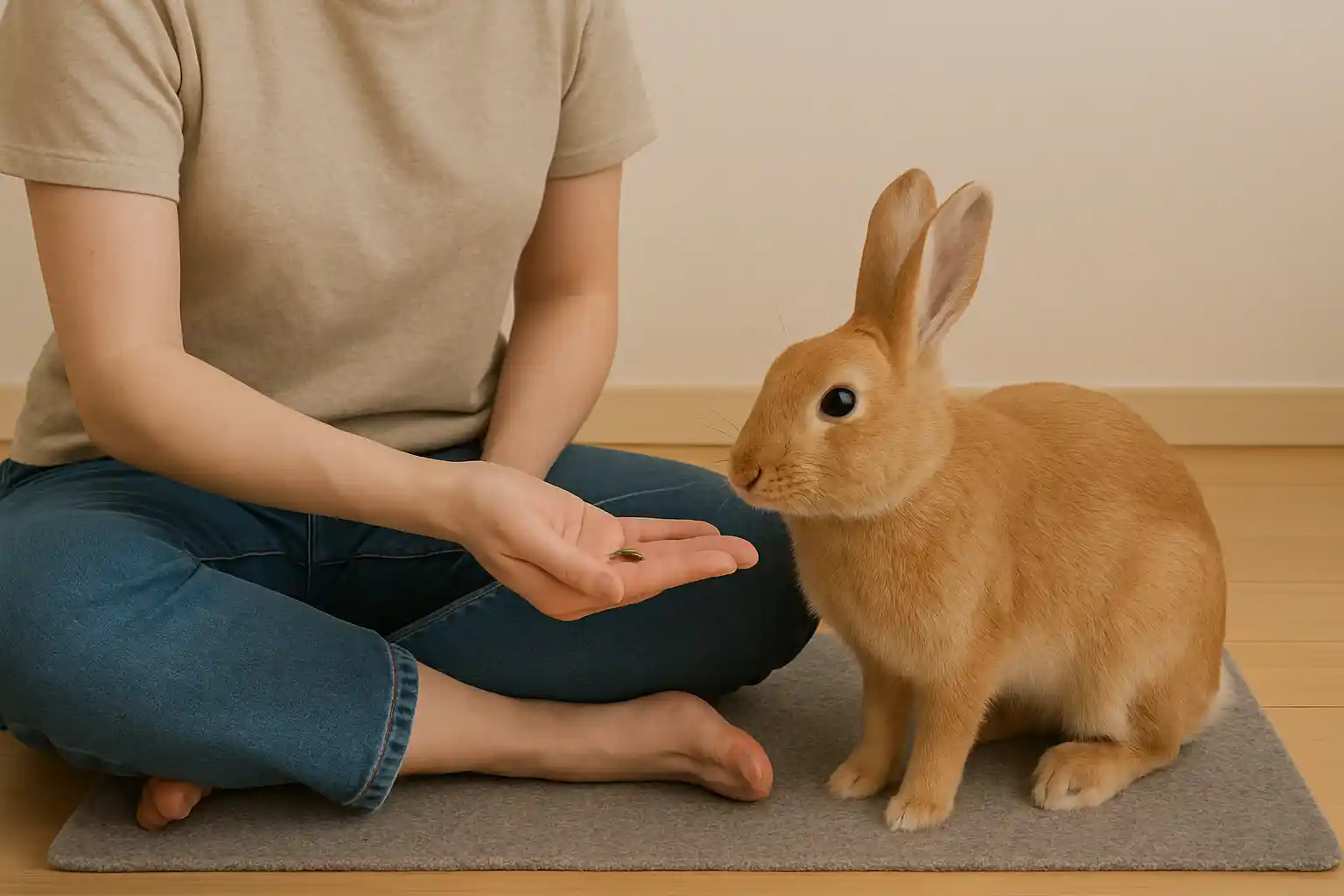
Through these bonding activities, your rabbit begins to see you not as a potential threat, but as a source of entertainment, treats, and positive experiences. The key is finding activities that your individual rabbit enjoys and participating in ways that respect their comfort level. As trust grows, you’ll likely see your bunny initiate interaction, seeking you out for these shared experiences.
Time and Patience in Developing Trust
Perhaps the most important element in learning how to make a bunny trust you is understanding the need for time and patience. Rabbits don’t form instant bonds like some pets might—their trust must be earned gradually through consistent, respectful interaction. If you’re wondering how to make a bunny trust you quickly, the honest answer is that there are no shortcuts, only methods that honor your rabbit’s natural timeline.
The Role of Routine in Building Trust
Rabbits are creatures of habit who thrive on predictability. Establishing consistent routines is fundamental to how to make a bunny trust you:
- Regular Feeding Times: Feed your rabbit at the same times each day. They’ll begin to associate your approach with positive experiences.
- Consistent Handling Schedule: Interact with your bunny at similar times daily, allowing them to anticipate and prepare for social contact.
- Predictable Cleaning Times: Maintain a regular schedule for habitat maintenance. This predictability reduces stress during necessary disturbances.
- Gradual Progression: Follow a consistent pattern when advancing your relationship—move forward in small steps rather than rushing or skipping stages.
- Daily Short Sessions: Brief, frequent interactions (10-15 minutes, 2-3 times daily) are more effective than occasional long sessions.
- Reliable Behavior: Use the same approach techniques, voice tones, and handling methods each time you interact.
I worked with Simon, whose rabbit Pepper seemed to make progress and then regress unpredictably. We discovered Simon’s inconsistent work schedule meant he would intensively interact with Pepper on days off but then be absent for long stretches. By establishing a consistent daily routine with shorter interactions, even on busy days, Pepper’s trust developed steadily without the regression.
Recognizing Individual Bunny Personalities
Just as people have diverse personalities, rabbits have unique temperaments that affect how they build trust. Understanding individual differences is crucial when learning how to make a bunny trust you:
- Naturally Cautious vs. Bold: Some rabbits are inherently more shy while others are naturally curious and confident. Adjust your expectations and approach accordingly.
- Previous Experiences: Rabbits with past trauma or limited human socialization may need considerably more time to trust. Rescue rabbits often fall into this category.
- Breed Tendencies: Certain breeds tend toward specific personality traits. For example, Netherland Dwarfs often have more territorial personalities, while Flemish Giants tend to be more laid-back.
- Age Factors: Younger rabbits may adapt more quickly to new bonds, while older rabbits may have more established patterns of behavior.
- Hormonal Influence: Unspayed/unneutered rabbits may be more territorial or aggressive. Consider discussing spaying/neutering with your vet to improve behavior and health.
- Response to Different People: Some rabbits may bond more easily with quieter individuals or show preference based on gender, appearance, or energy level.
In my practice, I met a family frustrated that their rabbit Oreo bonded quickly with their teenage daughter but remained wary of the parents. By observing, we discovered the daughter naturally moved slowly and spoke softly, while the parents had more energetic movements. When the parents mimicked their daughter’s calm approach, Oreo gradually extended trust to them as well.
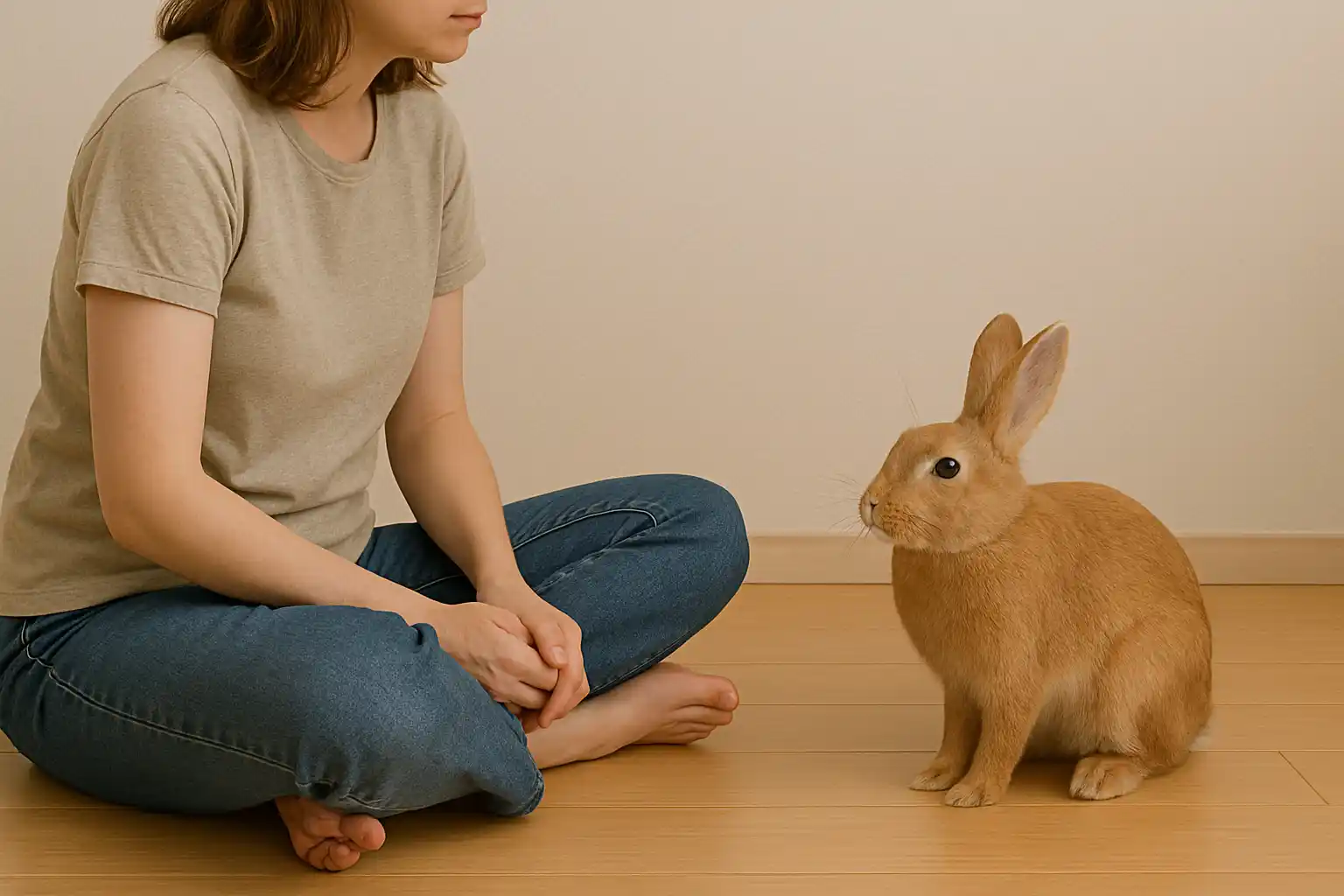
Understanding that trust-building is a marathon, not a sprint, helps maintain realistic expectations. Some rabbits may show signs of trust within days, while others might take months. Each rabbit moves at their own pace based on their unique personality and history. By respecting this individual timeline and maintaining consistent, positive interactions, you create the conditions where trust can naturally develop.
Conclusion
Building trust with your rabbit is a rewarding journey that transforms your relationship from one of caution to mutual affection. By understanding rabbit behavior, creating safe environments, using gentle handling techniques, engaging in bonding activities, and practicing patience, you’ll master how to make a bunny trust you in a way that respects their nature.
Remember that trust operates on your rabbit’s timeline, not yours. Some days may bring surprising breakthroughs, while others might seem like steps backward. This natural rhythm is part of the trust-building process and requires acceptance rather than frustration.
According to the House Rabbit Society, a respected international nonprofit organization dedicated to rabbit welfare, patience is the most important quality when building a relationship with these sensitive animals. Their research shows that rabbits who are allowed to approach humans on their own terms develop stronger, longer-lasting bonds than those who are forced into interaction.
The methods outlined in this guide for how to make a bunny trust you have helped hundreds of rabbit owners—from my client Emma, whose once-fearful rescue rabbit now greets her at the door, to my own experience with Clover, who progressed from hiding constantly to seeking cuddles on the couch. These transformations are possible with any rabbit when you commit to understanding and honoring their needs.
As you implement these techniques, pay attention to the subtle signs of progress—the moment your bunny takes a treat directly from your fingers, the first time they choose to hop near you rather than away, or that magical day when they flop contentedly by your side. These milestones mark your growing bond and are cause for celebration.
Building trust with your rabbit enriches both your lives. For your bunny, it means a life free from unnecessary fear and full of positive experiences. For you, it means the joy of a genuine connection with a sensitive, intelligent companion who has chosen to trust you. By mastering how to make a bunny trust you, you open the door to years of meaningful companionship with your rabbit.
Once you’ve established trust, you may want to take your relationship to the next level by teaching your rabbit to respond to your call. Our guide on how to train your bunny to come when called builds upon the trust foundation you’ve created and adds a practical skill that enhances your bond.
Frequently Asked Questions
How do I make my rabbit trust me?
To make your rabbit trust you, create a calm environment with hiding spaces, sit quietly at floor level allowing them to approach you, offer treats from an open palm, interact consistently but briefly several times daily, and avoid sudden movements or loud noises. This patient approach respects their prey animal nature and gradually teaches them that you’re safe, which is the foundation of how to make a bunny trust you.
How long does it take a rabbit to trust you?
Most rabbits begin showing initial trust behaviors within 2-4 weeks of consistent positive interaction, though complete trust typically develops over 2-6 months. Individual personality greatly affects this timeline—naturally confident rabbits may trust quickly, while timid or previously traumatized bunnies might take significantly longer. Consistent application of techniques for how to make a bunny trust you yields steady progress.
How do I get my rabbit to bond with me?
To bond with your rabbit, spend regular quiet time near them without forcing interaction, offer their favorite treats from your hand, engage in floor-level play with bunny-safe toys, establish consistent daily routines, and learn to read their body language. These bonding activities help your rabbit associate you with positive experiences, which is central to how to make a bunny trust you and develop a meaningful relationship. For more bonding techniques, see our complete guide on bonding with your bunny.
How to make a wild bunny trust you?
Wild rabbits have strong survival instincts and generally cannot be safely tamed. Instead of attempting to make a wild bunny trust you, admire them from a distance and provide indirect support through appropriate habitat in your yard. If you’ve found an orphaned wild baby rabbit, contact a licensed wildlife rehabilitator immediately rather than attempting to care for it yourself. If you’re dealing with a stray domestic rabbit, our article on how to get a stray bunny to come to you provides specialized guidance.
How do I know if my bunny is starting to trust me?
Signs your bunny is beginning to trust you include staying in place rather than fleeing when you enter the room, taking treats from your hand, approaching you voluntarily, showing curiosity about your belongings, maintaining relaxed body posture near you, and eventually displaying comfort behaviors like grooming or flopping nearby. These progressive signals confirm your success in how to make a bunny trust you.

